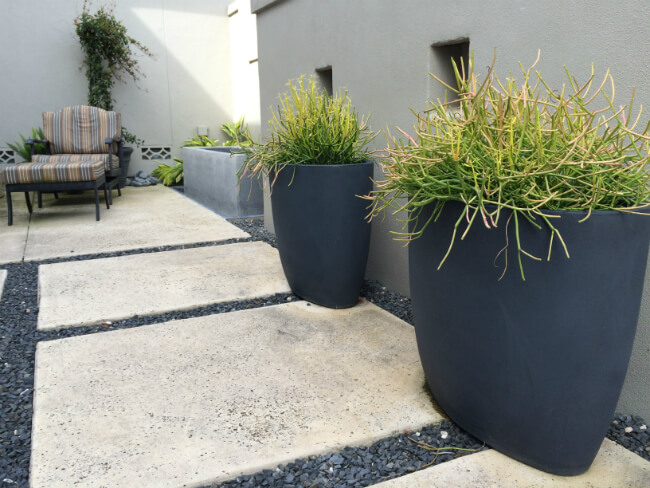A faux streambed can add woodland charm and delightful texture to your landscape. But these design details can make the difference between “nailed it” and “nope.”
We get it. When you’re faced with a lackluster lawn year after year, the temptation to rip it all out and replace it with gravel is fierce.
But using gravel — or crushed granite or river rock — as a default ground cover won’t cure what ails your landscape. And here’s five reasons why.
- It offers zero nutritional benefit.
- It absorbs and reflects heat.
- It doesn’t retain moisture.
- It needs continual maintenance, accumulating dust, leaves, refuse and weeds.
- It washes away in the rain and ends up clogging city storm sewers.
That’s not to say don’t use river rock ever. When it’s the right size — at least two inches in diameter — and used thoughtfully, it can create wonderful texture in a balanced landscape. Think edging for landscape beds or as a complement to flagstone or pathways.

River rock can also be used to facilitate drainage, like in side yards around AC condensers or in dry streambeds.
Don’t be discouraged if you’re thinking of using river rock. Just remember to put it in its place — and not every place. And fill your landscape with hardy trees, shrubs and perennials that add beauty, balance, birds and butterflies to your landscape.




